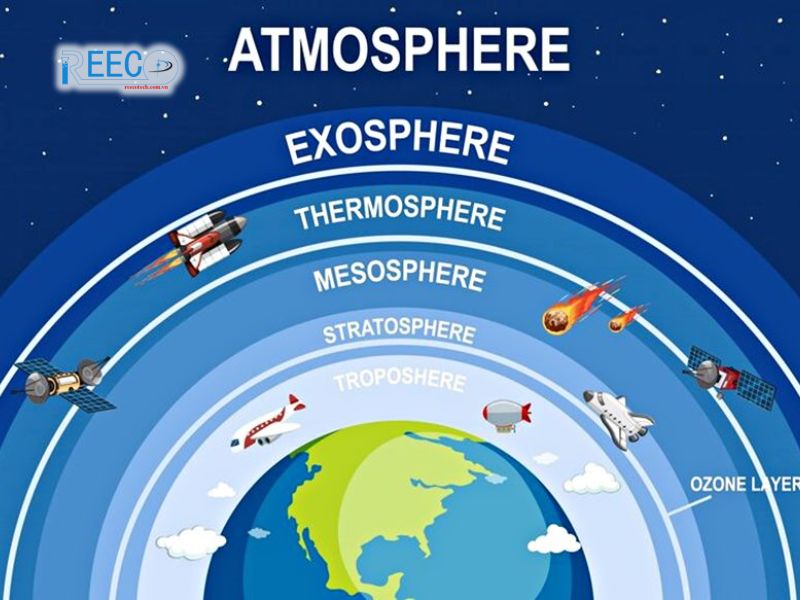What is atmospheric pressure and how does it significantly impact human life? This is a crucial factor in weather and climate research that you should be aware of.
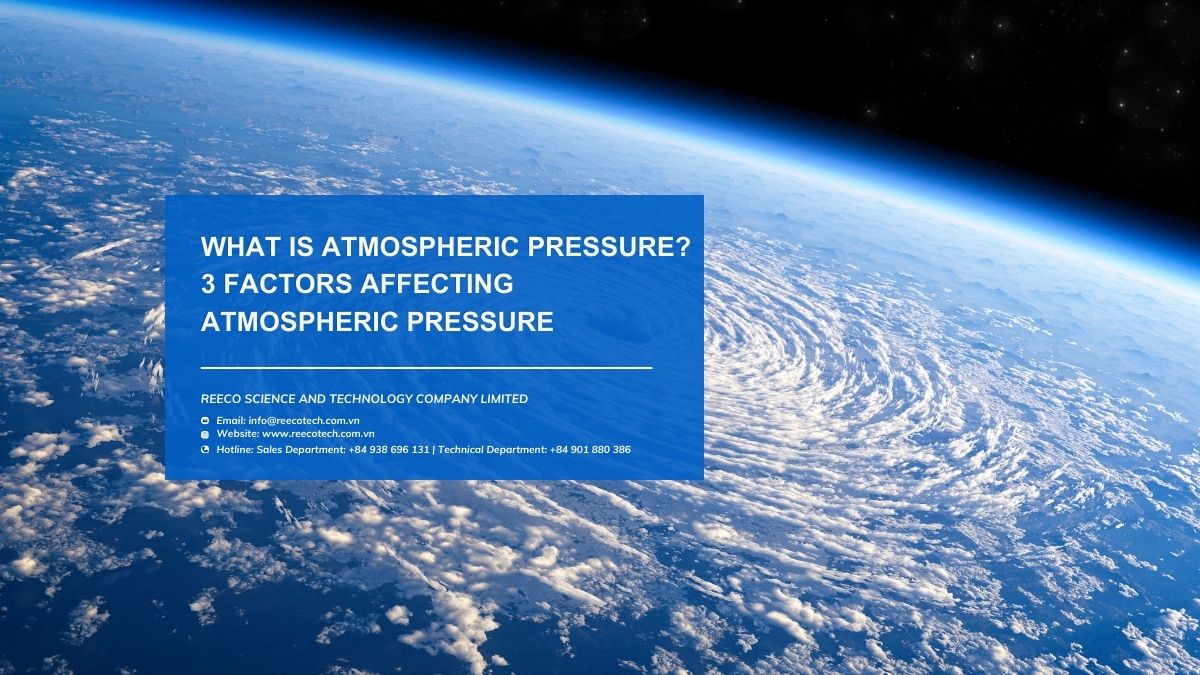
What is atmospheric pressure?
Atmospheric pressure (also known as air pressure or barometric pressure) is the pressure exerted by the weight of the atmosphere on the Earth’s surface. Similarly, other planets with atmospheres also experience atmospheric pressure.
As altitude increases, atmospheric pressure decreases due to the decreasing amount of air. The unit of measurement for atmospheric pressure is the Pascal (Pa), where 1 Pascal is equal to 1 Newton per square meter (1 Pa = 1 N/m²).
If we take a column of air with a base area of 1 cm², its mass would be 1.03 kg. Converting this to weight, we get 10.1 Newtons per square centimeter (10.1 N/cm²), which is equivalent to 101 kilonewtons per square meter (101 kN/m² or kPa).
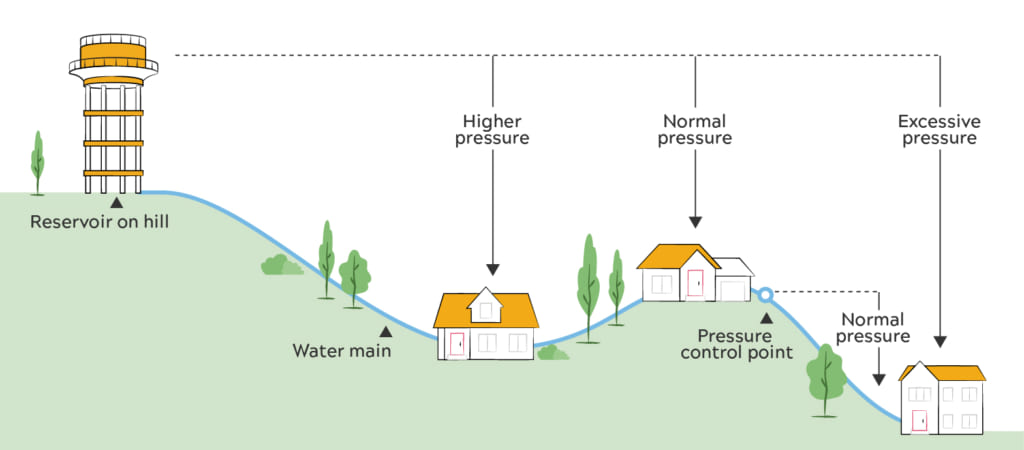
The Nature of Atmospheric Pressure
Atmospheric pressure is a result of the Earth’s gravitational pull on the air molecules in the atmosphere, specifically those near the surface. The formula for calculating atmospheric pressure depends on the planet’s mass, surface radius, the quantity and composition of its gases, as well as their vertical distribution within the atmosphere.
Atmospheric pressure can be altered by the planet’s rotation and factors such as wind speed and density changes due to temperature.
Mean Sea Level Pressure (MSLP)
Mean Sea Level Pressure (MSLP) is the atmospheric pressure exerted by the weight of the air above a given point at mean sea level. It’s a standard measure commonly used in weather reports on radio, television, newspapers, and the internet. The average value for MSLP is 1013.25 hectopascals (hPa), which is equivalent to 29.921 inches of mercury (inHg) or 760.00 millimeters of mercury (mmHg).
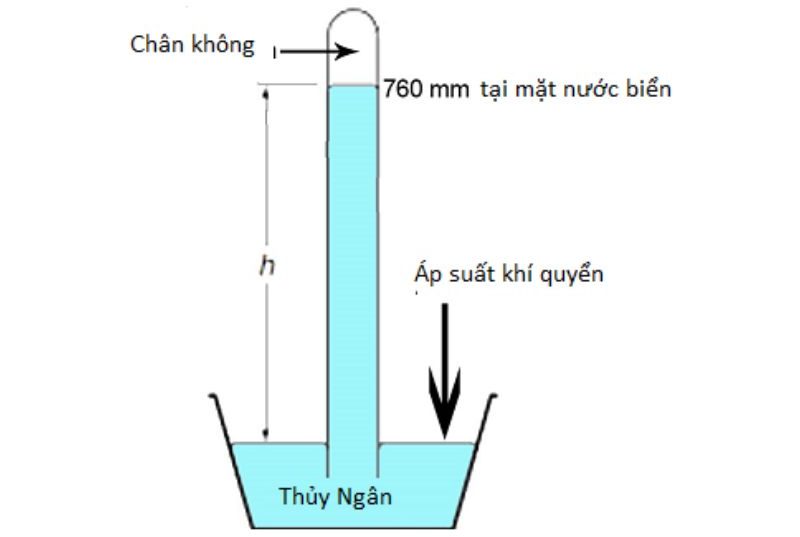
Pressure at Surfaces
Surface pressure is the atmospheric pressure at a specific point on the Earth’s surface, which can be either land or sea. This pressure is directly proportional to the amount of air above that location.
The average surface pressure on Earth is 985 hPa, which differs from the average pressure at sea level due to pressure variations between points above or below sea level. The average pressure at sea level is 1013.25 hPa, equivalent to 1 atmosphere (atm) or 29.92 inches of Hg.
The relationship between pressure (P), mass (m), and gravitational acceleration (g) is described by the formula:
P = F / A = (m * g) / A, where A is the surface area. Therefore, atmospheric pressure is proportional to the weight of the atmospheric mass per unit area at that location.
Pressure with altitude
Atmospheric pressure on Earth changes with altitude, so the atmospheric pressure at mountain peaks is usually lower than at sea level. Atmospheric pressure decreases from the Earth’s surface to the top of the mesosphere. Although atmospheric pressure can vary with weather conditions, it consistently decreases as altitude increases. Atmospheric pressure at a specific altitude can be calculated using the corresponding formulas.
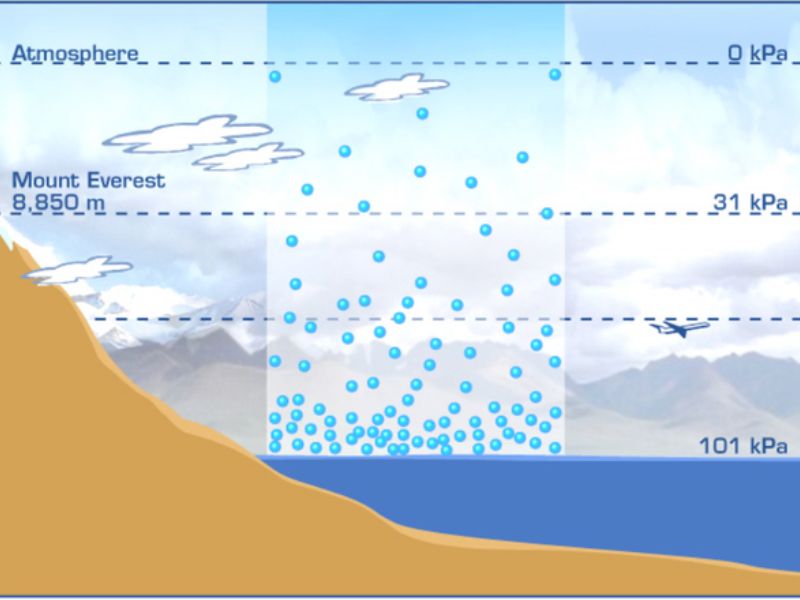
Temperature and humidity also affect atmospheric pressure. Atmospheric pressure increases in proportion to temperature and decreases in proportion to humidity. To accurately calculate atmospheric pressure, both of these factors need to be considered. The chart below illustrates the impact of altitude on atmospheric pressure at a temperature of 15°C and a relative humidity of 0%.
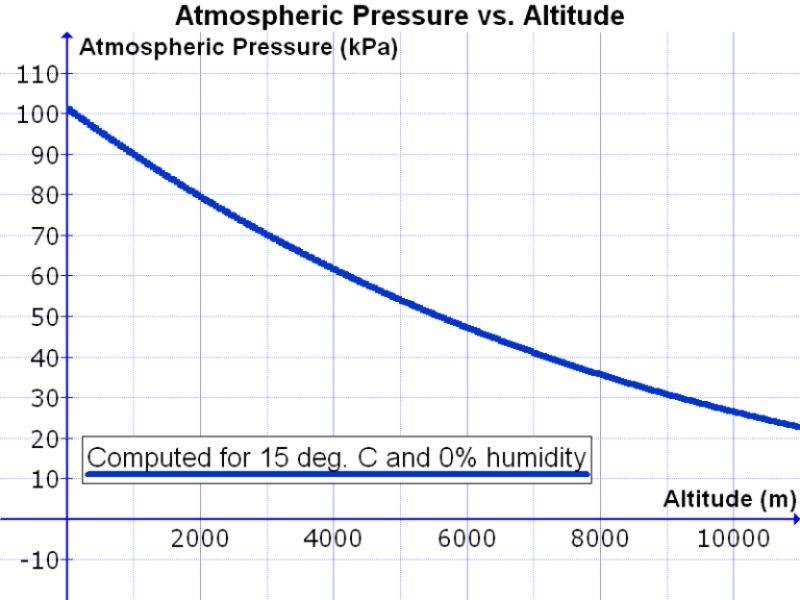
Pressure with water depth
One atmosphere (101,325 kPa or 14.7 psi) is also the pressure caused by the weight of a column of fresh water approximately 10.3 meters (33.8 feet) high. Therefore, a diver at a depth of 10.3 meters underwater experiences a pressure of about 2 atm (1 atm of air and 1 atm of water). Conversely, 10.3 meters is the maximum height that water can be lifted using suction under standard atmospheric conditions.
Low pressure, such as natural gas flow, is sometimes measured in units of inchH2O. Typical gas appliances are rated at a maximum of 1/2 psi, which is equivalent to 3487 Pa or 34.9 millibar. Similar measurement units with various names and symbols based on millimeters, centimeters, or meters are now less commonly used.
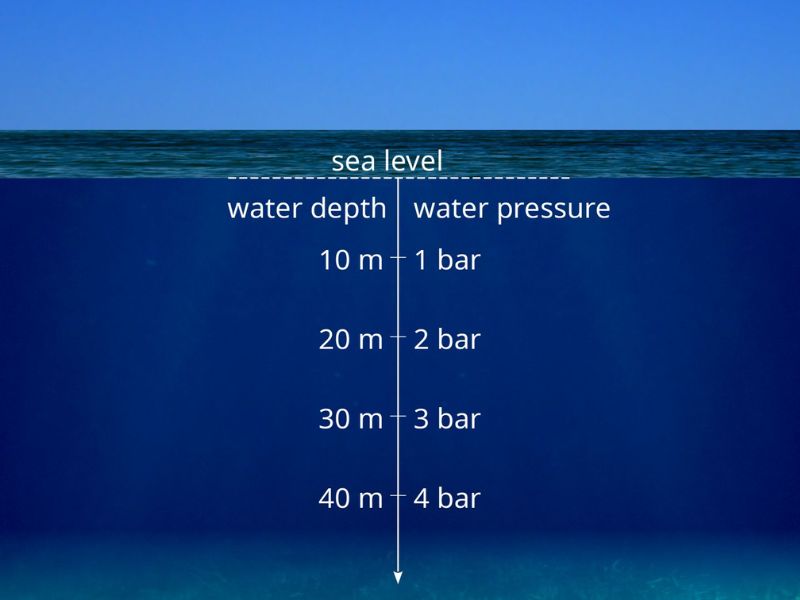
How to Measure Atmospheric Pressure with Common Units
The formula for calculating atmospheric pressure is as follows:
Where:
- P: Magnitude of atmospheric pressure (mmHg)
- F: Force applied to a defined surface (N)
- S: Area of the surface subjected to atmospheric pressure (m²)
The common unit of pressure measurement is millimeters of mercury (mmHg). Additionally, there are other units such as N/m², Pascal (Pa), Psi, Bar, atm, kg/cm², and psf.
To find out the atmospheric pressure in different units, refer to the table below:
| Unit Name | Value |
| Pascal (Pa N/m2) | 1 |
| Kilôpascal (kPa) | 0.001 |
| Milibar (mb) | 0.01 |
| Bar (bar) | 0.00001 |
| Kilôbar (kbar) | 0.00000001 |
| Áp suất khí quyển (atm) | 0.0000098692 |
| Kilôgam trên mỗi cm vuông (kg/cm2) | 0.000010197 |
| Pound mỗi inch vuông (Psi) | 0.000145 |
| Pound mỗi foot vuông (psf) | 0.020885 |
Atmospheric Pressure Sensors and Instruments for Meteorological Observations
Currently, there are various types of devices and sensors for measuring atmospheric pressure available on the market, including:
- CS451 Pressure Sensor
- CS456 Titanium Pressure Sensor
- CS106 Atmospheric Pressure Sensor
- CS100 Atmospheric Pressure Sensor
- PTB110 Atmospheric Pressure Measuring Device
- PTB210 Atmospheric Pressure Measuring Device
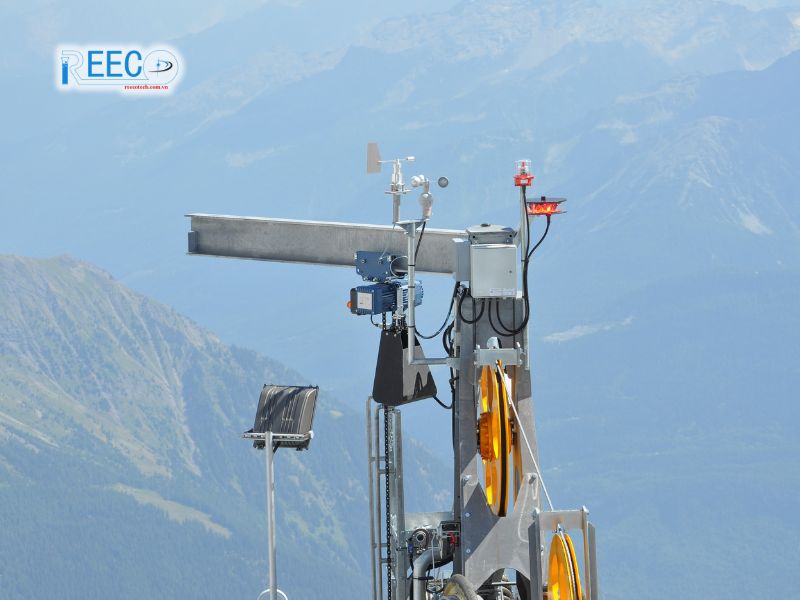
3 Factors Affecting Atmospheric Pressure
Atmospheric pressure is directly influenced by three factors: altitude, temperature, and weather.
Altitude: As altitude increases, atmospheric pressure decreases. This is because the air becomes thinner, and its density decreases (a detailed explanation can be found in a separate article). The weight exerted on the Earth’s surface decreases, leading to a reduction in air pressure.
Temperature: When temperature rises, the air expands and becomes lighter, resulting in a decrease in atmospheric pressure. Conversely, when the temperature drops, the air contracts and becomes heavier, causing an increase in atmospheric pressure.
Weather: Stable weather with light winds and clear skies is usually associated with higher atmospheric pressure. On the other hand, rainy days, strong winds, and cloudy conditions tend to lower atmospheric pressure.

Applications of Atmospheric Pressure in Daily Life
Atmospheric pressure has many important applications in daily life, ranging from medicine and education to manufacturing and machinery (such as high-pressure machines, car wash pumps, aircraft, etc.).
In the industrial sector, atmospheric pressure plays a crucial role. It is widely applied in equipment, production lines, engines, and machinery. Controlling and monitoring atmospheric pressure is essential to ensure safety and efficiency during operation. If the air pressure exceeds permissible levels, it can lead to severe explosions and pose significant dangers. Therefore, strict monitoring and appropriate adjustments are necessary.
In the field of meteorology and hydrology, understanding atmospheric pressure aids in weather forecasting, monitoring, and analyzing climate phenomena. Atmospheric pressure is a key factor in predicting storms, strong winds, and other extreme weather events. Modern meteorological and hydrological stations use atmospheric pressure data to provide accurate and timely information to relevant authorities and the public, enhancing safety and efficiency in production, transportation, and daily activities.
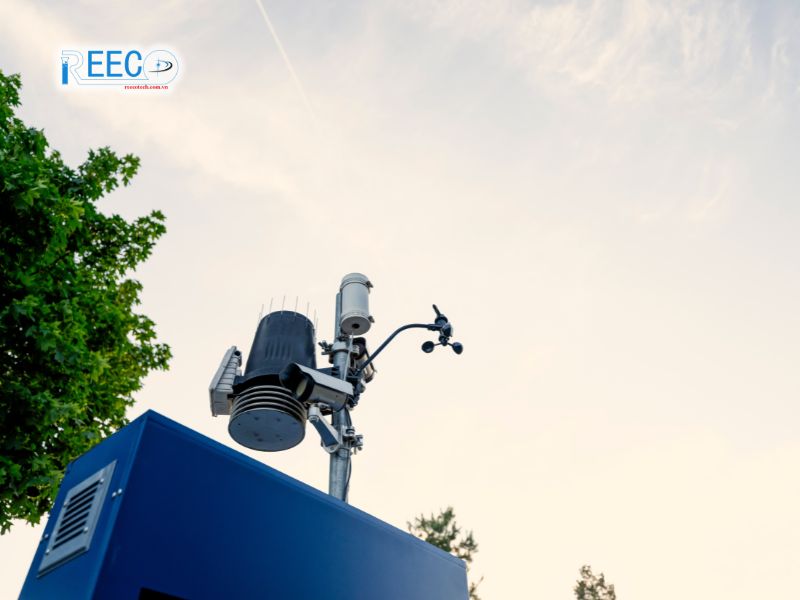
Why does atmospheric pressure decrease as altitude increases?
As altitude increases, atmospheric pressure decreases because the Earth’s gravitational pull on gas molecules weakens and the thickness of the atmosphere from the point of pressure measurement also decreases. This is a fundamental principle in meteorology and is crucial in many applied fields such as aviation and meteorology. Understanding this principle helps improve weather forecasting models and supports aviation activities, ensuring safety and efficiency.

